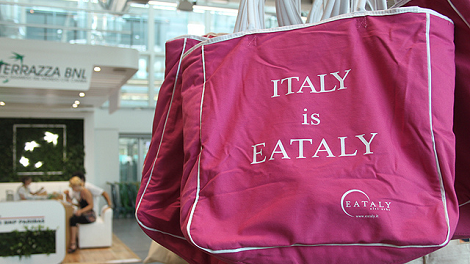Project Description
Considered among the most well-known countries in the world for its multitude of tastes, flavors and scents and for the incredible variety of dishes and recipes which every city has to offer, Italy has always been a synonym for good food.

Traditional Roman cuisine is simple, made of basic ingredients that aren’t any less appreciable than complex and elaborate creations. It’s a rustic cuisine made of homemade but flavored, genuine and substantial hues.
Food fried in batter, such as salted codfish or zucchini, is one of the most typical Roman dishes, alongside artichokes alla giudia (deep-fried, according to Jewish tradition), pasta with pajata (the small intestine of milk-fed calves), carbonara pasta (eggs, cheek lard, pepper and pecorino), amatriciana pasta (cheek lard, pecorino and tomato sauce) pasta cacio e pepe (pecorino cheese and pepper), lamb coratella with artichokes, trippa alla romana (Roman tripe), coda alla vaccinara (tail) and saltimbocca alla romana (thin slices of veal, sage and ham cooked in butter and white wine).
Roman cooking also traditionally includes many fish dishes and obviously pizza, which, as opposed to Napoletan pizza, is very thin and crunchy.
Nowadays, in order to appeal to all kinds of tastes, besides dishes belonging to the folk culture, you can also find restaurants serving a more refined cuisine that includes ethnic food.

THE APERITIVO
The Italian way of spending late afternoons, after work or before a night out, is to have an aperitif, a ritual which consists of having a cocktail accompanied by very frivolous snacks, either sitting down at a table or standing up at a bar.
In some pubs there is such a great abundance and variety of food that aperitifs may substitute supper, so you end up spending a limited amount of money, usually about 10 euros.
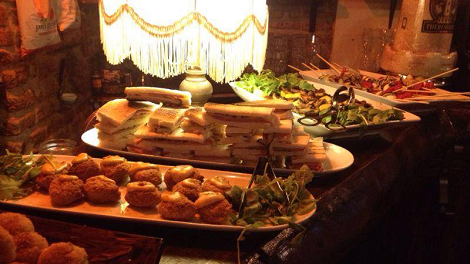
STREET FOOD
A cheap and easy way to have a quick bite to eat is to buy street food. The most popular kind in Rome are pizza al taglio, supplì (a speciality made of fried rice, mixed with meat sauce and mozzarella, covered in breadcrumbs and then deep-fried – if you are a vegetarian, you can also ask for the meatless ones: “senza carne”/”without meat”), sandwiches filled with cold cuts and cheeses, and tramezzini (a triangular sandwich made of pancarrè with different kinds of sliced meats, cheese, vegetables or other ingredients – a small note for vegetarians: don’t eat the tramezzini because the bread is made with lard).
An alternative could also be to go to bakeries and buy a simple but tasty pizza rossa (“red”, topped only with tomato sauce) or pizza bianca (“white”, meaning plain, which is usually filled with typical italian deli products like baloney, prosciutto or salami).
Trapizzino. The name is a play on words, combining tramezzino (a triangular sandwich) and stuffed with a filling to orderd – traditional Roman mains such as braised oxtail, tripe in tomato sauce, and chicken with peppers.
Filetti di baccalà are battered salt cod fillets. Every pizzeria serves them but the most famous place to eat them is at Dar Filettaro a Santa Barbara (Largo dei Librari, 88).
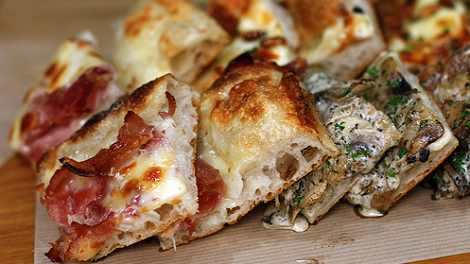
ICE CREAM
Italian ice cream is without doubt the best in the world, especially if you go to high quality ice cream shops where you will find superior homemade products, made with prime materials of absolute quality.
We highly recommend Venchi and GROM which only uses fresh seasonal fruit provided by the best agricultural biological companies, without the addition of colorants, aromas, conservatives or emulsifients. Only the best fresh milk, free range eggs, coffee and cocoa are carefully chosen.
Other ice cream parlours that are worth mentioning are San Crispino e Giolitti alongside many other artisan ones such as Fata Morgana, Pico Gelato, La Romana, Carapina, Gelateria dei Gracchi, Fior di Luna and Gelateria del Teatro, so the suggestion is to trust hearsay or read reviews on the internet to find the best, and not bank on the tourist ones whose products, although good, are of the industrial kind.

COFFEE
An italian meal cannot end without a coffee, served in small quantities in a porcelain cup that helps to keep the expresso at the right temperature.
The most famous bar in Rome is Sant’Eustachio, located close to the Pantheon, where you can taste excellent and renonwed coffee, whose blend is still secret and legendary.
Another bar which boasts of a long tradition of toasting coffee and excellent quality mixes is the Tazza d’Oro, which you can find in the same area as the Pantheon.
In the very central Via Dei Condotti, two steps away from Piazza di Spagna, you can find one of the oldest cafés in Italy, the Antico Caffè Greco. In addition to its historical origins, the café is famous for the famous clients it has had over the years: it was also renowned, and, in part, still is today, as a meeting place for intellectuals.
Caffè specialty:
Faro, Fax Factory, Pergamino Caffè, Casa Manfredi, Bar Due Fontane, Mondi Caffè, Espressamente illy, Molino Bakery Bar&Cucina.
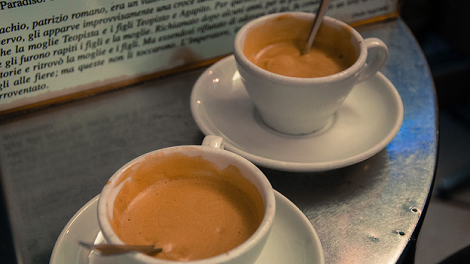
WHERE TO EAT
Walking along the streets, you will surely have noticed how Rome offers a vast gastronomic panorama, suitable for all pockets and palates. Street food can be found more or less anywhere, and so can ethnic food. After your meal, you can be sure to find an ice cream shop ready to delight you with a cup of sweetness.
To end your day beautifully you have infinite possibilities, but some areas of the city are particularly indicated for some experiences rather than others.
If you are in the mood for a chic aperitif, the area around Ponte Milvio offers a great number of more than suitable pubs.
If you prefer walking through striking streets, full of shops and stands, and end with a nice glass of wine, you would rather go to Monti or Trastevere.
Another very interesting area is Tiberina and its bank of the Tiber on the Trastevere side, where many cocktail bars and open air restaurants blossom in summer.
If you want to experiment Judaic and Roman cousine, you will find a large variety of choice in the Ghetto and in Testaccio.
San Lorenzo and Pigneto are neighborhoods with a bohemian taste since, in time, they went from being proletarian areas to places for young artists, where pubs and restaurants for any budget started appearing alongside artisan botteghe, making them vital areas of the city with a very informal touch.
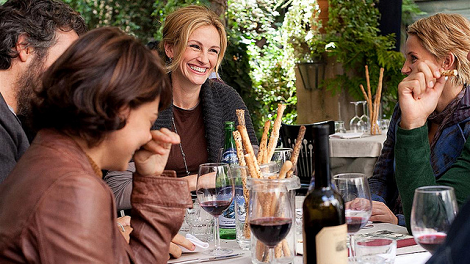
EATALY
Eataly, in Ostiense and Piazza della Repubblica, for lovers of good food, is a must-see, a unique place where you can find the best products of Italian cuisine. There are eleven restaurants which will satisfy any of your culinary needs, including one for vegetarians.


